
Rice has announced an initial commitment to fund groundbreaking, interdisciplinary research at five new and existing institutes across campus.

Rice has announced an initial commitment to fund groundbreaking, interdisciplinary research at five new and existing institutes across campus.
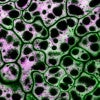
Cellular process that fuels plant growth yields surprising insights
A new study by Rice University bioscientists explains how structures inside plant cells collaborate to fuel germination. The findings could shed light on corresponding mechanisms in human cells.

Rice leaders featured in French news
Rice President Reginald DesRoches and Vice President for Research Ramamoorthy Ramesh have been featured in multiple French news articles after visiting the Rice Global Paris Center this summer.

Light-activated molecular machines get cells ‘talking’
Rice University scientists have used light-activated molecular machines to induce cell-to-cell calcium signaling, revealing a powerful new strategy for drug design. This technology could lead to improved treatments for people with heart problems, digestive issues and more.

Reporters broadcast live, on-the-scene, inside living cells
Synthetic biologists from Rice University and Princeton University have demonstrated “live reporter” technology that can reveal the workings of signaling networks in living cells with far greater precision than current methods. The first-of-its-kind reporting tool can show how quickly signaling networks respond and how responses vary from cell to cell in time and space.

Rice U. physicist to lead world’s longest-running nuclear collider experiment
Rice U. Frank Geurts has been named co-spokesperson of STAR, the world’s longest-running particle collider experiment.

Rice U.’s Songtao Chen wins NSF CAREER Award
Songtao Chen, an assistant professor of electrical and computer engineering at Rice University, has won a prestigious National Science Foundation CAREER Award to advance the development of quantum networks by leveraging point defects in silicon.

Study: Pandemic FOMO had mental health consequences for older adults
During the COVID-19 pandemic, fear of missing out (FOMO) on social activities may have negatively affected the mental health of adults at high risk of serious disease, according to a new study from Rice University and Baylor University.
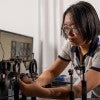
NeuWS camera answers ‘holy grail problem’ in optical imaging
Engineers from Rice and the University of Maryland have created technology that could allow cameras to "see" through fog, smoke, driving rain, murky water, skin, muscle and other light-scattering obstructions.

Electrochemical device captures carbon dioxide at the flick of a switch
New carbon capture technology developed by Rice University engineers can generate a continuous, high-purity carbon dioxide stream from diluted, or low-concentration, gas streams using only electricity and a water-and-oxygen-based reaction.
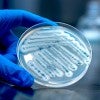
New enzyme could aid anticancer drug development
Retracing nature’s steps, Rice University engineer Xue Gao and her team mapped out the full series of enzyme-powered reactions a marine fungus uses to produce a complex molecule with anticancer properties. In the process, the Gao lab uncovered the first fungal enzyme of its kind known to break an amide bond.

Study finds human impact on wildlife even in protected areas
The largest long-term standardized camera-trap survey to date finds that human activity impacts tropical mammals living in protected areas and sheds light on how different species are affected based on their habitat needs and anthropogenic stressors.
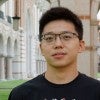
Researchers give robots new options for arrangements
Rice computer scientists have expanded the options robots have for rearranging objects with a new algorithm that allows them to switch between complementary skills like grabbing and placing individual objects or pushing and sliding entire groups.

Kyrillidis wins grant to address AI’s ‘catastrophic forgetting’
Rice computer scientist Anastasios Kyrillidis has won a Microsoft Research Award to find ways to overcome the problem of “catastrophic forgetting” during the training of artificial intelligence.
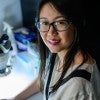
Yimo Han receives NSF CAREER Award
Rice materials scientist Yimo Han has won a prestigious NSF CAREER Award to advance the use of complex 2D materials in flexible electronics, quantum computing and other applications.